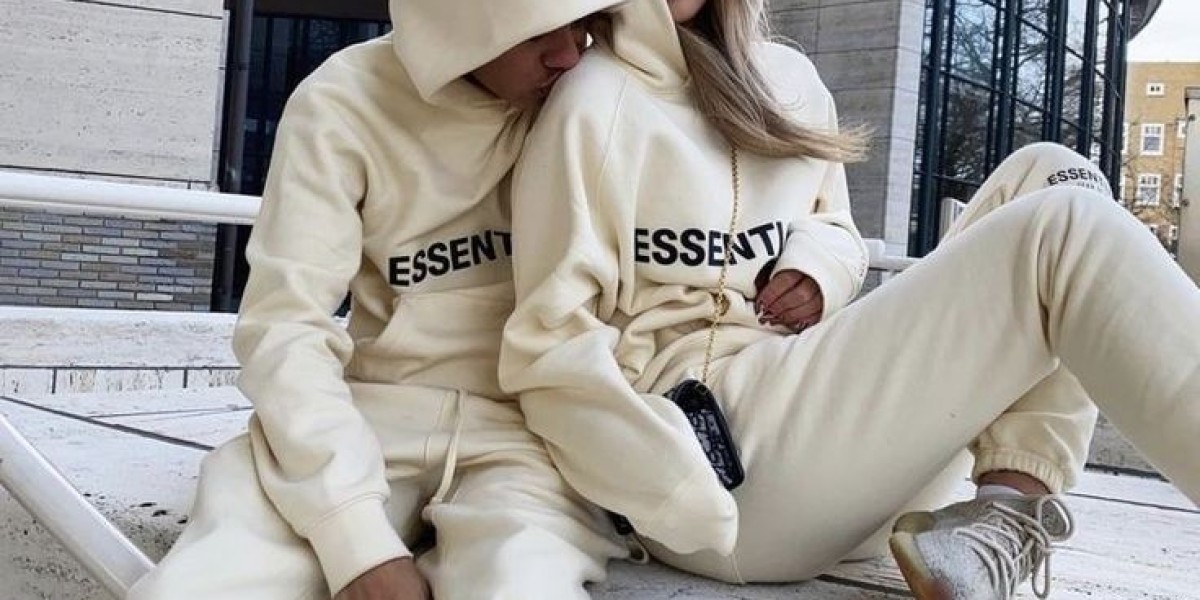Essential Hoodie: Cultural Influence on Fashion
The hoodie, once seen primarily as a piece of athletic wear or casual loungewear, has evolved into an iconic garment that holds significant cultural weight. Its transformation from a basic utilitarian item to a global fashion staple is a reflection of various social, political, and cultural forces. The hoodies journey into mainstream fashion is an example of how clothing can transcend its original purpose to become a symbol of youth culture, rebellion, and even identity. Essentials HoodieIn this context, the hoodie has had a profound cultural influence on fashion, shaping not only the way people dress but also the narratives they construct about themselves.
1. The Rise of Streetwear and Youth Culture
One of the key factors in the hoodies cultural influence on fashion is the rise of streetwear, a fashion subculture rooted in urban, youth-driven aesthetics. Streetwear emerged from the skateboarding, hip-hop, and punk scenes in the late 20th century and became a global phenomenon in the 1990s and 2000s. Brands like Supreme, Stssy, and Off-White popularized streetwear, with the hoodie emerging as one of the most essential items in their collections.
For many, the hoodie represents a sense of rebellion and non-conformity. Its a garment that allows individuals to blend into their surroundings while also expressing their identity. Streetwear brands often use hoodies as a canvas for bold logos, graphic prints, and innovative designs, turning the hoodie into a symbol of status and urban culture. As streetwear became more mainstream, celebrities, athletes, and musicians adopted hoodies, cementing their place as a fashion statement and not just a functional piece of clothing.
2. The Hoodie as a Symbol of Rebellion and Protest
The hoodie has also become a symbol of resistance and protest. In particular, the tragic death of Trayvon Martin in 2012 brought renewed attention to the hoodies cultural significance. Martin, a 17-year-old African American, was shot and killed by George Zimmerman while wearing a hoodie, sparking widespread protests and conversations about racial profiling and police brutality. The hoodie, once associated with youth culture and rebellion, became a powerful symbol of solidarity in the fight against systemic racism.
In the years following Martin's death, people began to wear hoodies as a form of activism. The "I Am Trayvon Martin" campaign, which encouraged people to wear hoodies in memory of Martin, highlighted the garments ability to transcend fashion and take on a deeper cultural and political meaning. This event underscored how the hoodie can be an emblem of resistance, using clothing to challenge social norms and advocate for justice.
3. The Hoodie in High Fashion
While the hoodie has deep roots in streetwear and youth culture, it has also made its way onto the high-fashion runway. Designers like Balenciaga, Vetements, and Louis Vuitton have incorporated hoodies into their collections, blending the casual garment with luxury aesthetics. This fusion of streetwear and high fashion reflects broader trends in the industry, where the lines between casual and formal wear are increasingly blurred.
For instance, Balenciagas oversized hoodie designs, often paired with tailored suits or sleek accessories, challenge traditional ideas of what constitutes "formal" or "luxury" fashion. By incorporating the hoodie into high fashion, designers have elevated the garment, shifting its cultural narrative from rebellious youthwear to a symbol of high-end fashion's adaptability and inclusivity.
This influence is not limited to runway shows; it has also been embraced by celebrities and influencers who blend high-end and street styles. The popularity of athleisure, a trend that combines athletic wear with casual fashion, has also contributed to the hoodies place in everyday luxury, allowing it to be worn in a variety of settings, from casual outings to sophisticated events.
4. The Hoodie as a Canvas for Identity and Self-Expression
The hoodies cultural influence is not only seen in its adoption by streetwear brands and high fashion but also in its role as a medium for self-expression. Over the years, the hoodie has become a canvas for various subcultures, allowing individuals to express their personal style and beliefs. Graphic prints, slogans, and patches are often used to personalize hoodies, making them unique expressions of identity.
For example, in the early 2000s, hip-hop artists like Kanye West and Jay-Z popularized hoodies with bold, eye-catching graphics, which became staples of their music videos and public appearances. In the same vein, punk rockers, skaters, and artists have used hoodies as a form of expression, incorporating rebellious imagery and messages into their designs. This transformation of the hoodie into a platform for individuality has helped cement its place as an iconic garment in both fashion and culture.
5. The Hoodie in the Digital Age
In the digital age, the hoodie has become closely associated with the rise of online subcultures and the tech industry. Entrepreneurs and tech moguls such as Mark Zuckerberg and Steve Jobs are often seen wearing hoodies, which has led to their association with Silicon Valleys start-up culture. The hoodie, in this context, represents a casual, egalitarian approach to workwear, signaling a rejection of formal dress codes and traditional notions of professionalism.
This shift has extended beyond the tech world into social media and digital platforms, where influencers and content creators frequently wear Essentials Shirtsto project a sense of relatability and authenticity. The rise ofYouTube and Instagram culture, where personal branding is crucial, has allowed the hoodie to remain a core element of many influencers wardrobes, embodying both comfort and style in equal measure.
6. The Hoodies Impact on Gender and Fashion Norms
The hoodie has also played a significant role in challenging traditional gender norms in fashion. Its unisex design has made it a favorite among people of all genders, with many brands offering hoodies as part of gender-neutral collections. In this sense, the hoodie is emblematic of a broader trend toward inclusivity in fashion, where clothing is no longer strictly divided along gender lines.
By embracing the hoodie as a gender-neutral garment, many fashion brands and designers are breaking down barriers and offering consumers more freedom to define their personal style without being confined to outdated expectations of what is "masculine" or "feminine."
Conclusion
The hoodie has evolved from a practical piece of clothing into a global fashion icon, shaped by a range of cultural, social, and political influences. Whether its seen as a symbol of rebellion, a tool for self-expression, a staple of streetwear, or a luxury item, the hoodie continues to be a versatile and powerful garment in contemporary fashion. Its ability to transcend boundarieswhether between streetwear and high fashion, or between personal identity and political statementillustrates the evolving relationship between culture and clothing. As fashion continues to evolve, the hoodie will undoubtedly remain a key player in defining modern style.







